For the beginning woodworker, few tools are as essential and versatile as a good wood lathe. But there are thousands of options out there. How is someone relatively new to the trade supposed to figure out what to invest in?
We’re here to help you make the right turn from the start. Read on for some basic buying tips and our picks for the best wood lathe for beginners.
Size
Go big or go home? Not exactly.
For beginners, a smaller lathe provides a versatile, more affordable starting point.
Still, size is the first thing to consider. The issue comes down to two key dimensions: the swing and the distance between centers. Depending on those dimensions, wood lathes fall into some broad types, which we’ll get to in a bit.
Before delving into those considerations, here’s a general note on lathe size.
You can always use a large lathe to turn smaller projects. But tackling a large project on a small lathe? Not so much. The limited capacity and power of a small machine may rule out big table legs and such.
So if you want the flexibility to take on bigger projects, consider going at least one step up from what you currently think you need.
Swing and DBC
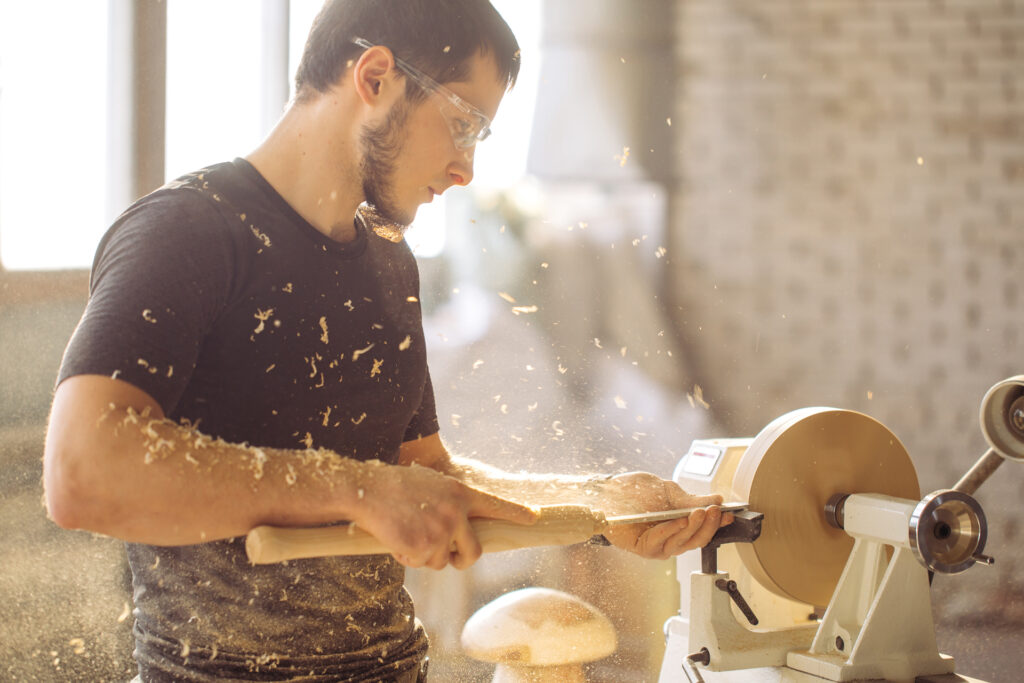
Swing refers to the maximum diameter of the workpiece you can turn over the bed of the lathe. Measure the distance from the top of the bed to the center of the spindle (the part of the headstock that turns your workpiece). Then double that measurement. That’s the swing.
If the lathe’s swing is 10 inches, then you can theoretically turn a bowl that’s up to 10 inches in diameter. Note, however, that the size you can create is actually smaller because you starting at that max diameter and remove material.
The distance between centers (DBC) is what determines the maximum length of the workpiece you can turn. As the term suggests, it’s the distance from the center of the spindle to the center of the tailstock (the part opposite the headstock that supports the other end of the workpiece).
Type
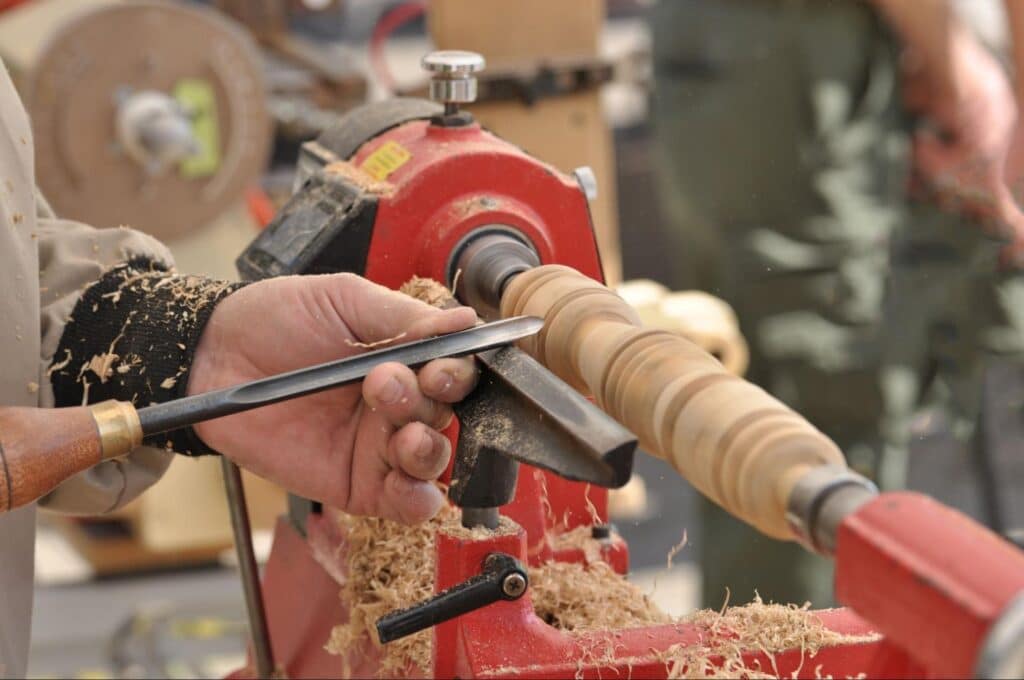
Wood lathes come in sizes that can be grouped under three main types or categories: mini lathes, mid-sized or midi lathes, and full-sized lathes:
Mini Lathes
- Swing: Up to 10 inches
- DBC: Up to 18 inches
- Retail price: $250 – $500
- Ideal for: Small-scale projects and hobbyists with limited space.
Midi Lathes
- Swing: 12 to 16 inches
- DBC: 18 to 36 inches (or larger with bed extensions)
- Retail price: $500 – $1,500
- Suitable for: A wide variety of projects, including bowls, spindles, and small furniture pieces.
Full-Sized Lathes
- Swing: 16 inches or larger
- DBC: 36 inches or more
- Retail price: $1,000 – $5,000
- Great for Turning large bowls, table legs, and other sizable workpieces.
These types span most needs for swing and DBC, catering to different wood lathe projects and preferences.
To select the right size, consider your specific woodworking goals, available space, and budget. A midi is a good bet for a beginner with some confidence in growing skills.
Speed
The speed of your wood lathe has a big impact on crucial considerations, including safety, precision, and efficiency.
Too fast, and you risk tool kickback or a workpiece becoming a projectile. Too slow, and you can have tear-out or other surface finish problems. (Get tips on troubleshooting tear-out and more.)
How to Determine Your Optimal Speed
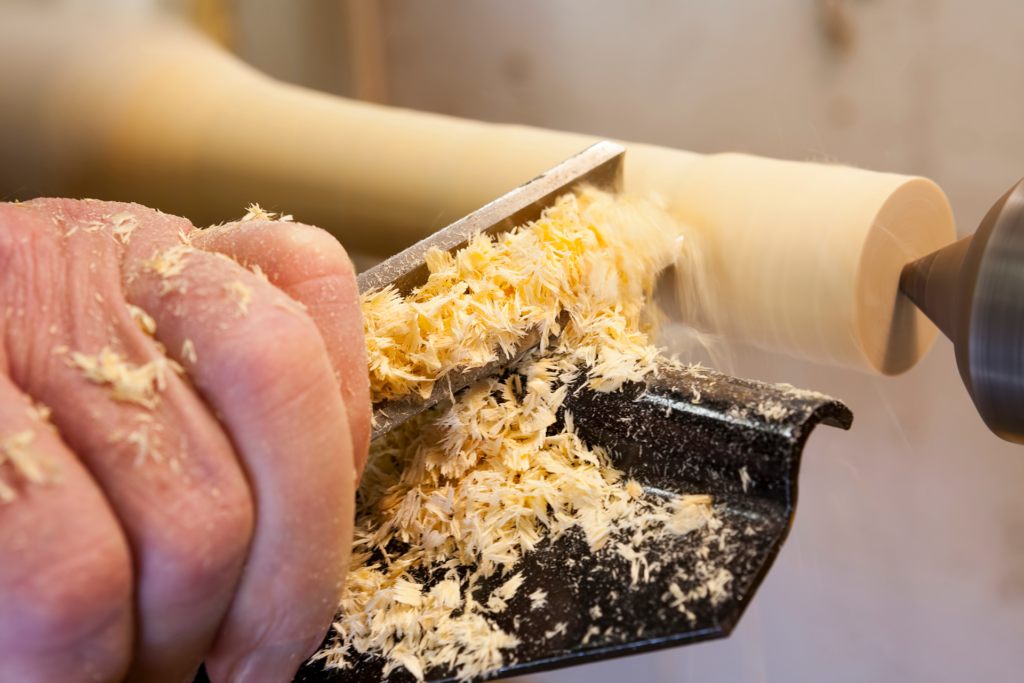
There’s a pretty simple formula that works for most projects:
- Divide 6,000 by the diameter of your workpiece. That gives you the low end of a good RPM range. So, for a 6-inch bowl blank 6,000 / 6 = 1,000 RPM.
- To get a max for your speed range, divide 9,000 by the diameter. Again for a 6-inch diameter workpiece, 9,000 / 6 = 1,500 RPM.
Softer woods may call for slower speeds. Always start at the low end and gradually increase speed. Keep your eyes open, ears peeled, and hands supple—watching, listening, and feeling for how your workpiece and your tool are responding to the increasing speed.
Look for a lathe that will cover the speeds you want. Keep in mind that mini lathes often max out at 2,500 RPM. The midis and full-size lathe go higher (up to 4,000).
Power
Power plays a key role in a wood lathe’s ability to meet your needs.
It makes sense to invest in the most powerful lathe that fits your budget and space constraints. A more powerful lathe allows for turning larger and denser workpieces with ease, providing greater flexibility in the types of projects you can undertake.
Mini lathes range from 1/4 to 1/2 horsepower. That usually works for pieces within the size limits of these machines. Midi lathes go from 1/2 to 1 HP. Full-size lathes from 1 to 2 horsepower or more—good for those bigger jobs and denser woods.
Our Picks
All right, now that we have some basic considerations laid out, what are some specific wood lathe options for beginners? For starters, we recommend choosing between mini and midi lathes instead of just jumping to full size.
Here are our picks, moving from minis to midis:
WEN 3424T
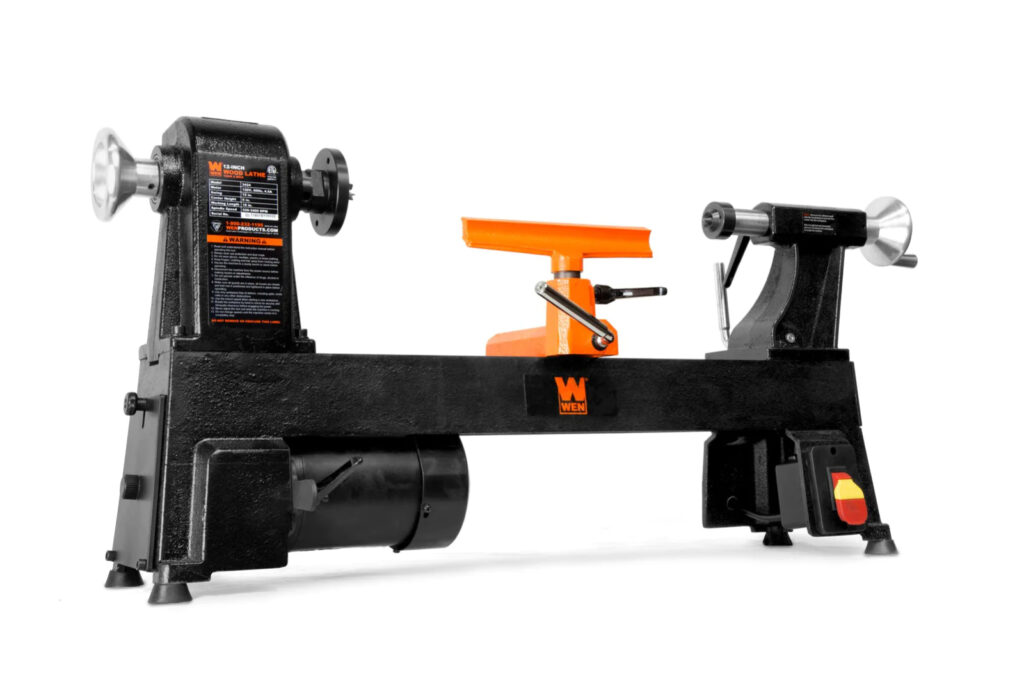
This compact, versatile benchtop / mini lathe is ideal for beginners with minimal workshop space. It features digital speed readout and variable speed control, allowing for precise adjustments to accommodate various turning projects.
- Swing: 12 inch
- DBC: 18 inch
- Power: ¾ HP
- Price: $300 – $500
RIKON 70-100
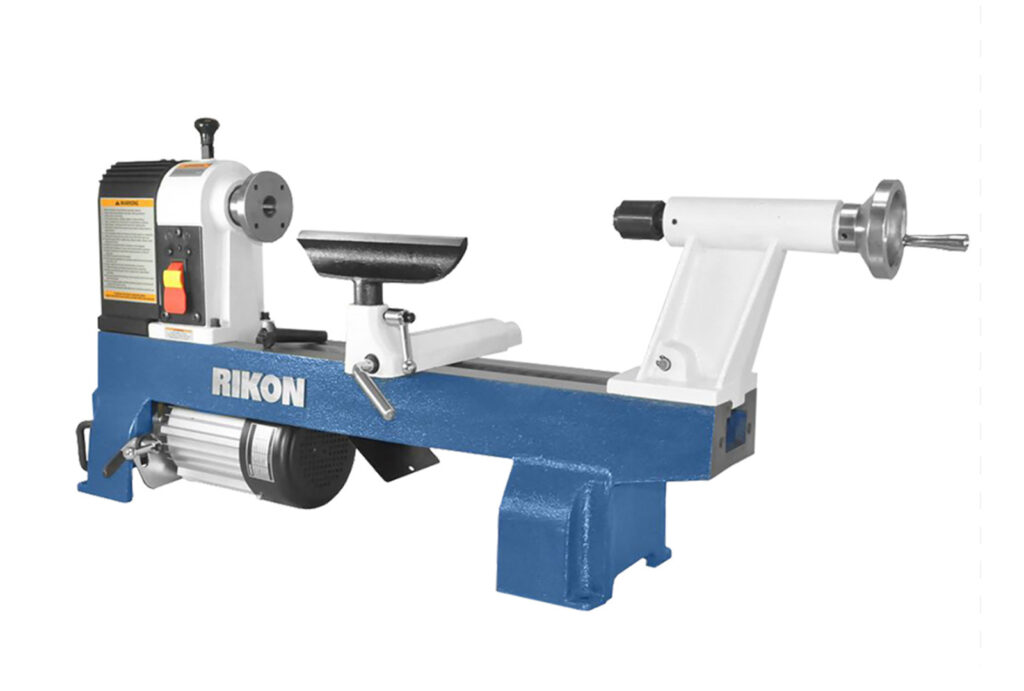
This is another compact, affordable mini lathe for beginners short on space. It features variable speed control, sturdy construction, and easy-to-use controls. Beginners appreciate its simple design and sturdy construction.
- Swing: 12 inches
- DBC: 16 inches
- Power: ½ HP
- Price Range: $250 – $400
Delta 46-460
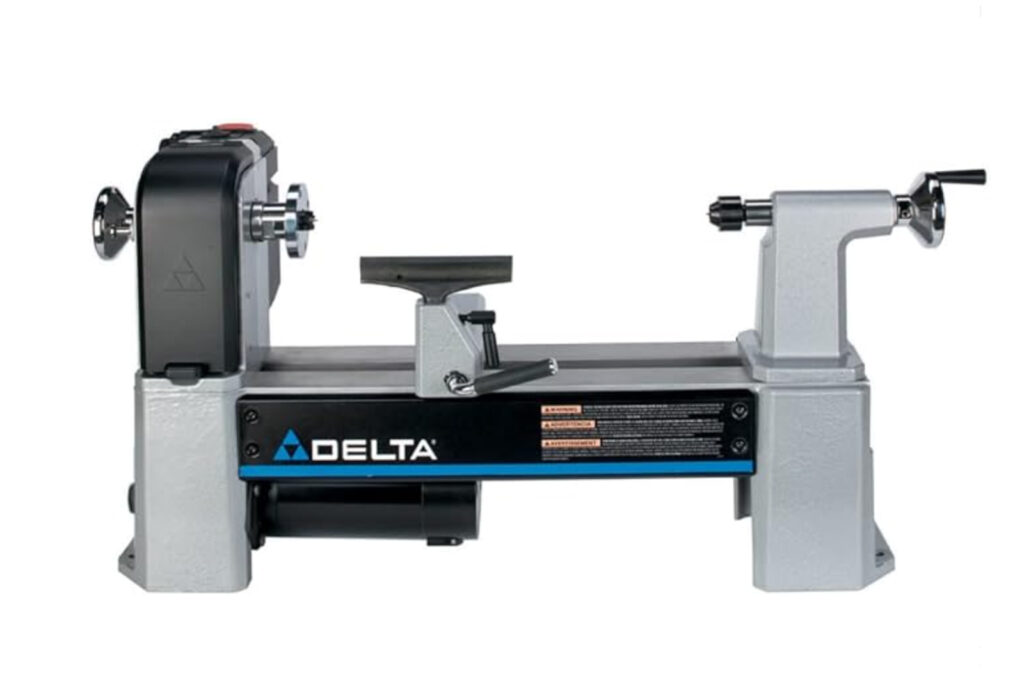
Known for its durability and smooth operation, this midi wood lathe is great for all kinds of furniture spindles. With a sleek design, it offers variable speed control and a patented belt tensioning system for quick speed changes.
- Swing: 12.5 inches
- DBC: 16.5 inches (with an optional 25.5-inch extension for a total of 42 inches)
- Power: 1 HP
- Price range: $600 – $800
Jet JWL-1221VS
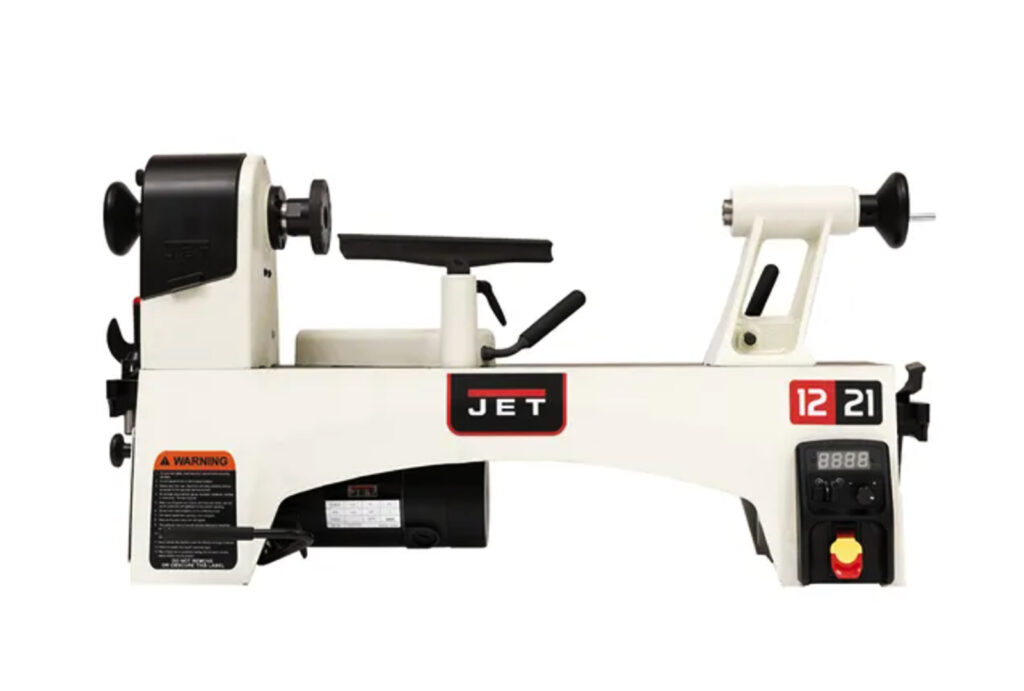
This premium midi lathe can satisfy beginners and experienced woodworkers alike. It’s built tough with a fine finish and a great stand. It also offers a powerful motor, smooth variable speed control, and an innovative ratchet-style belt tensioning system.
- Swing: 12.5 inches
- DBC: 20.5 inches
- Power: 1 HP
- Price: $1,000 – $1,500
Colt SML-350
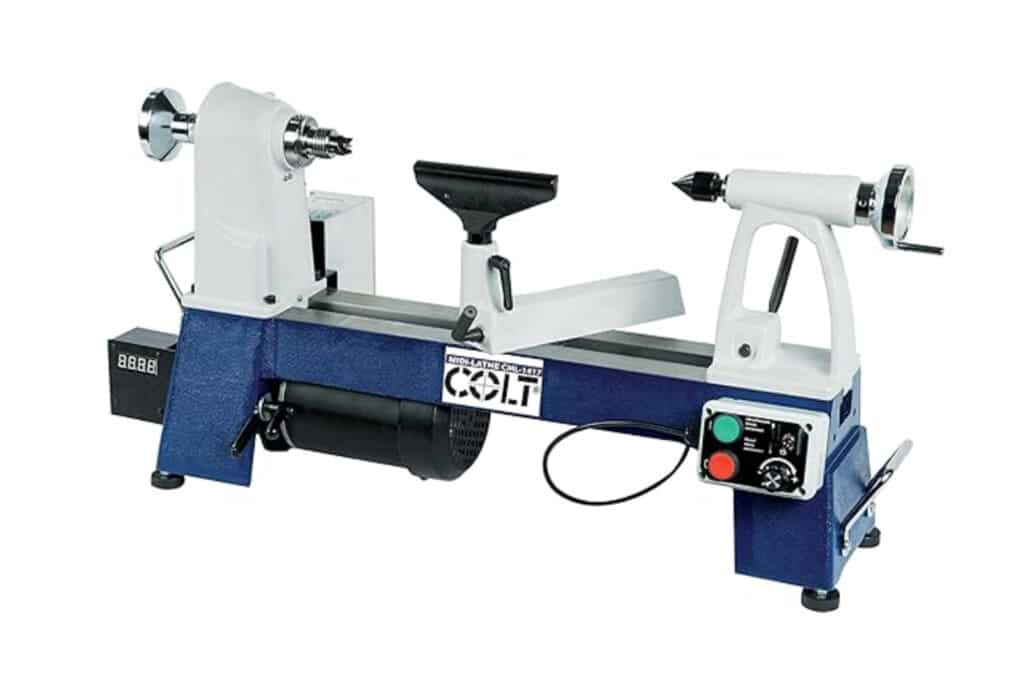
This midi is easy to use with a simple speed control dial. It also looks great, while providing plenty of sturdy power. Another standout features is a 1-inch diameter tool rest stem (vs. the usual ⅝ inch) for exceptional stability for this often overlooked component.
- Swing: 14 inch
- DBC: 16.5 inch
- Power: 1 HP
- Price: $800 – $1,000
The Phase That Pays
One of the key differentiators for that last one on the list, the Colt, is that it’s a three-phase machine. As a result, it provides more torque and higher energy efficiency compared to single-phase systems.
Getting your shop wired to handle a three-phase machine is a big investment. But there’s another way to enjoy the benefits: get a phase converter. This equipment transforms your single-phase electricity into reliable, balanced 3-phase power.
Woodworkers across the country trust USA-made American Rotary three-phase converters to provide continuous power for any load (including lathes) in their shops.
In fact, no matter what wood lathe you choose, you can power it—and everything else in your shop—with a single American Rotary converter. Need help with sizing? Contact us to get started.



